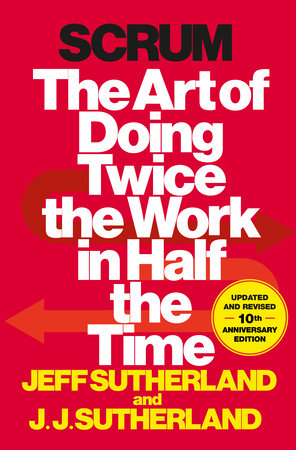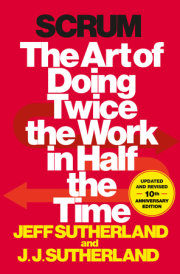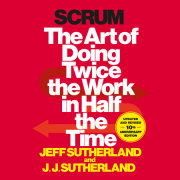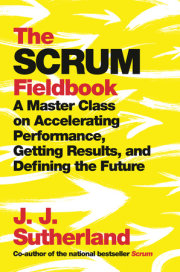CHAPTER ONE
The Way the World Works Is Broken
Jeff Johnson was pretty sure it wasn’t going to be a good day. On March 3, 2010, the Federal Bureau of Investigation killed its biggest and most ambitious modernization project--the one that was supposed to prevent another 9/11 but that had devolved into one of the biggest software debacles of all time. For more than a decade the FBI had been trying to update its computer system, and it looked as if they would fail. Again. And now it was his baby.
He’d shown up at the FBI seven months earlier, lured there by the new Chief Information Officer, Chad Fulgham, whom he’d worked with at Lehman Brothers. Jeff was Assistant Director of the IT Engineering Division. He had an office on the top floor of the J. Edgar Hoover Building in downtown Washington, D.C. It was a big office. It even had a view of the Washington Monument. Little did Jeff know he’d end up in a windowless cinder-block office in the basement for much of the next two years, trying to fix something that everyone believed to be unfixable.
“It was not an easy decision,” Jeff says. He and his boss had decided to declare defeat and kill a program that had already taken nearly a decade and cost hundreds of millions of dollars. By that point, it made more sense to bring the project in-house and do it themselves. “But it needed to be done and done well.”
The project was the long-awaited computer system that would bring the FBI into the modern age. In 2010--the era of Facebook, Twitter, Amazon, and Google--the FBI was still filing most of its reports on paper. The system the Bureau used was called the Automated Case Support system. It ran on gigantic mainframe computers that had been state of the art sometime in the eighties. Many special agents didn’t even use it. It was just too cumbersome and too slow in an era of terror attacks and swift-moving criminals.
When an FBI agent wanted to do something--anything, really--from paying an informant to pursuing a terrorist to filing a report on a bank robber, the process wasn’t that different from what it had been thirty years earlier. Johnson describes it this way: “You would write up a document in a word processor and print out three copies. One would be sent up the approval chain. One would be stored locally in case that one got lost. And with the third you’d take a red pen--I’m not kidding, a red pen--and circle the key words for input into the database. You’d index your own report.”
When a request was approved, that paper copy would drift down from upstairs with a number on it. A number written on a piece of paper is how the FBI kept track of all its case files. This method was so antiquated and porous that it was blamed in part for the Bureau’s failure to “connect the dots” that showed various Al Qaeda activists entering the country in the weeks and months before 9/11. One office was suspicious of one person. Another wondered why so many suspicious foreigners were getting flight training. Another had someone on a watch list but never told anyone else. No one in the Bureau ever put it all together.
The 9/11 Commission drilled down after the attack and tried to discover the core reason it was allowed to happen. Analysts, said the Commission, couldn’t get access to the very information they were supposed to analyze. “The poor state of the FBI’s information systems,” reads the report, “meant that such access depended in large part on an analyst’s personal relationships with individuals in the operational units or squads where the information resided.”
Before 9/11, the FBI had never completed an assessment of the overall terrorism threat to the United States. There were a lot of reasons for this, from focus on career advancement to a lack of information sharing. But the report singled out lack of technological sophistication as perhaps the key reason the Bureau failed so dramatically in the days leading up to 9/11. “The FBI’s information systems were woefully inadequate,” the Commission’s report concludes. “The FBI lacked the ability to know what it knew: there was no effective mechanism for capturing or sharing its institutional knowledge.”
When senators started asking the Bureau some uncomfortable questions, the FBI basically said, “Don’t worry, we have a modernization plan already in the works.” The plan was called the Virtual Case File (VCF) system, and it was supposed to change everything. Not letting any crisis go to waste, officials said they only needed another $70 million on top of the $100 million already budgeted for the plan. If you go back and read press reports on VCF at the time, you’ll notice that the words revolutionary and transformation are used liberally.
Three years later, the program was killed. It didn’t work. Not even a little bit. The FBI had spent $170 million in taxpayer money to buy a computer system that would never be used--not a single line of code, or application, or mouse click. The whole thing was an unmitigated disaster. And this wasn’t simply IBM or Microsoft making a mistake. People’s lives were, quite literally, on the line. As Senator Patrick Leahy of Vermont, then the ranking Democrat on the Senate Judiciary Committee, told the Washington Post at the time:
We had information that could have stopped 9/11. It was sitting there and was not acted upon. . . . I haven’t seen them correct the problems. . . . We might be in the 22nd century before we get the 21st-century technology.1
It is rather telling that many of the people who were at the FBI when the Virtual Case File disaster happened aren’t there anymore.
Copyright © 2014 by Jeff Sutherland. All rights reserved. No part of this excerpt may be reproduced or reprinted without permission in writing from the publisher.






